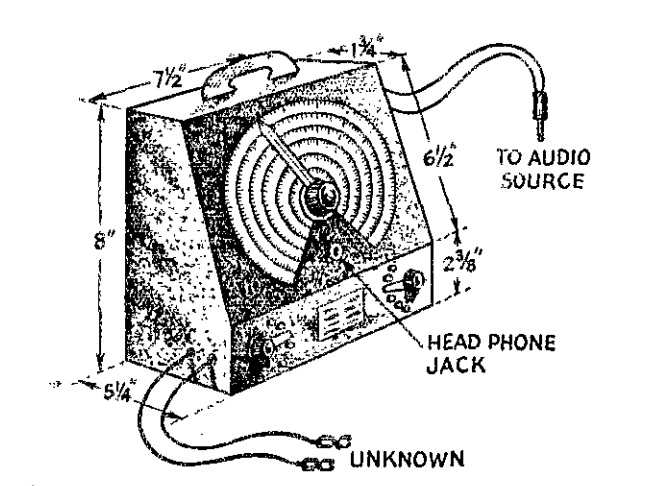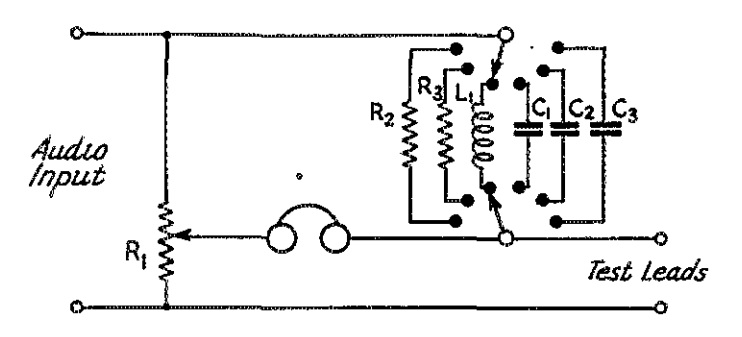
 One item that was in short supply 75 years ago were meter movements. There was a backlog in their manufacture to the point where hams were being encouraged to sell their old ones, as shown from the form at left from the April 1942 issue of QST.
One item that was in short supply 75 years ago were meter movements. There was a backlog in their manufacture to the point where hams were being encouraged to sell their old ones, as shown from the form at left from the April 1942 issue of QST.
But the absence of a meter didn’t have to mean that it was impossible to measure things. The device shown above was a simple bridge circuit for measuring the values of resistors, capacitors, and inductors. The circuit was contained in an article in the March 1943 issue of QST, submitted by W.J. Mertz, VE4UN, using whatever was available. An audio signal is fed into the input, and the potentiometer adusted until the circuit is in balance, at which point the audio output disappears. By calibrating the dial with a few known values, the unknown value can be quickly determined.
The author didn’t have an audio oscillator, so he instead used the device by feeding in the squeal from a regenerative receiver. And in the absence of anything else to make the dial pointer, he used the handle of a broken toothbrush.
While inexpensive multimeters such as the one shown at the left make this project less necessary today, it could serve as the basis for an interesting science fair project for relatively advanced students. For information about the theory involved, a trip to Wikipedia will provide the necessary background.


